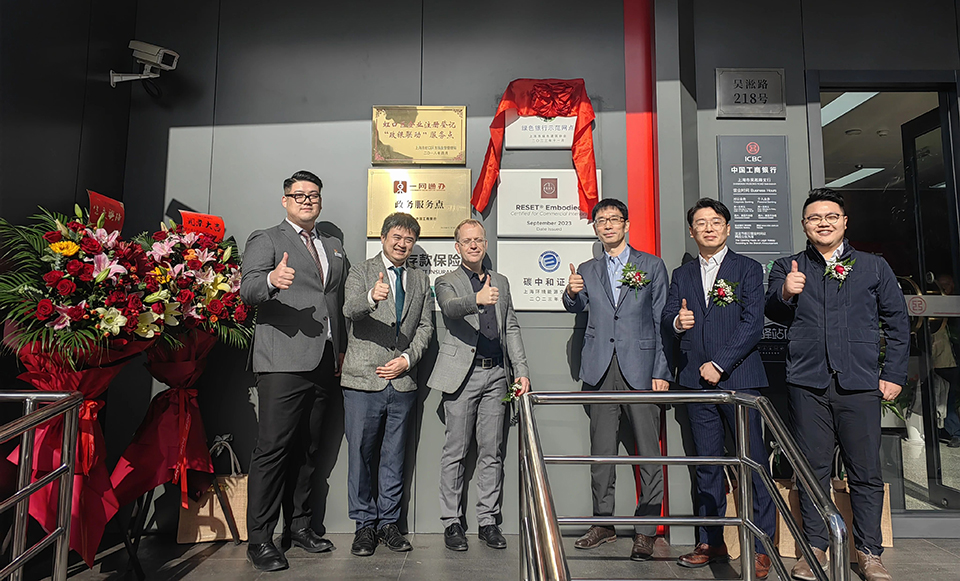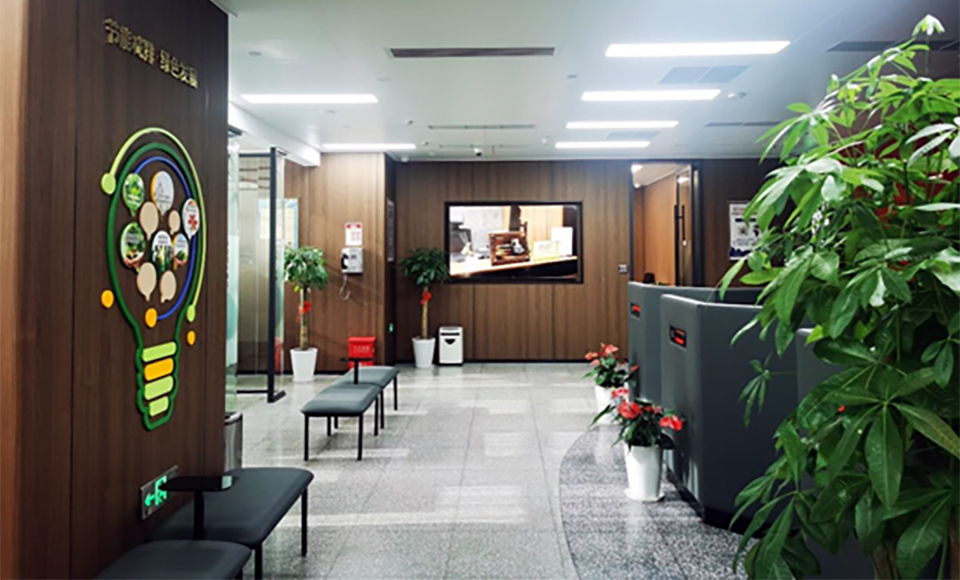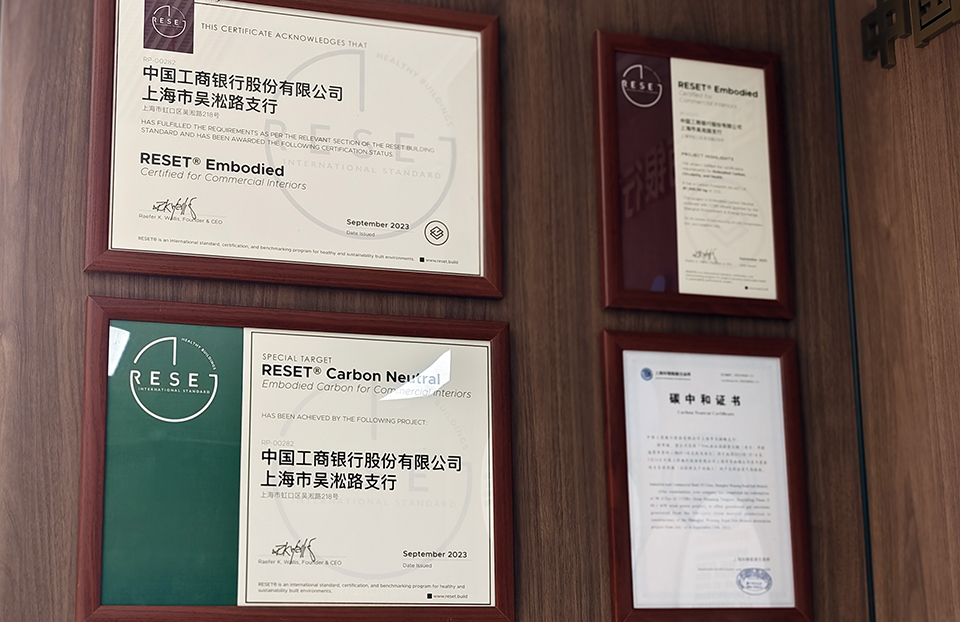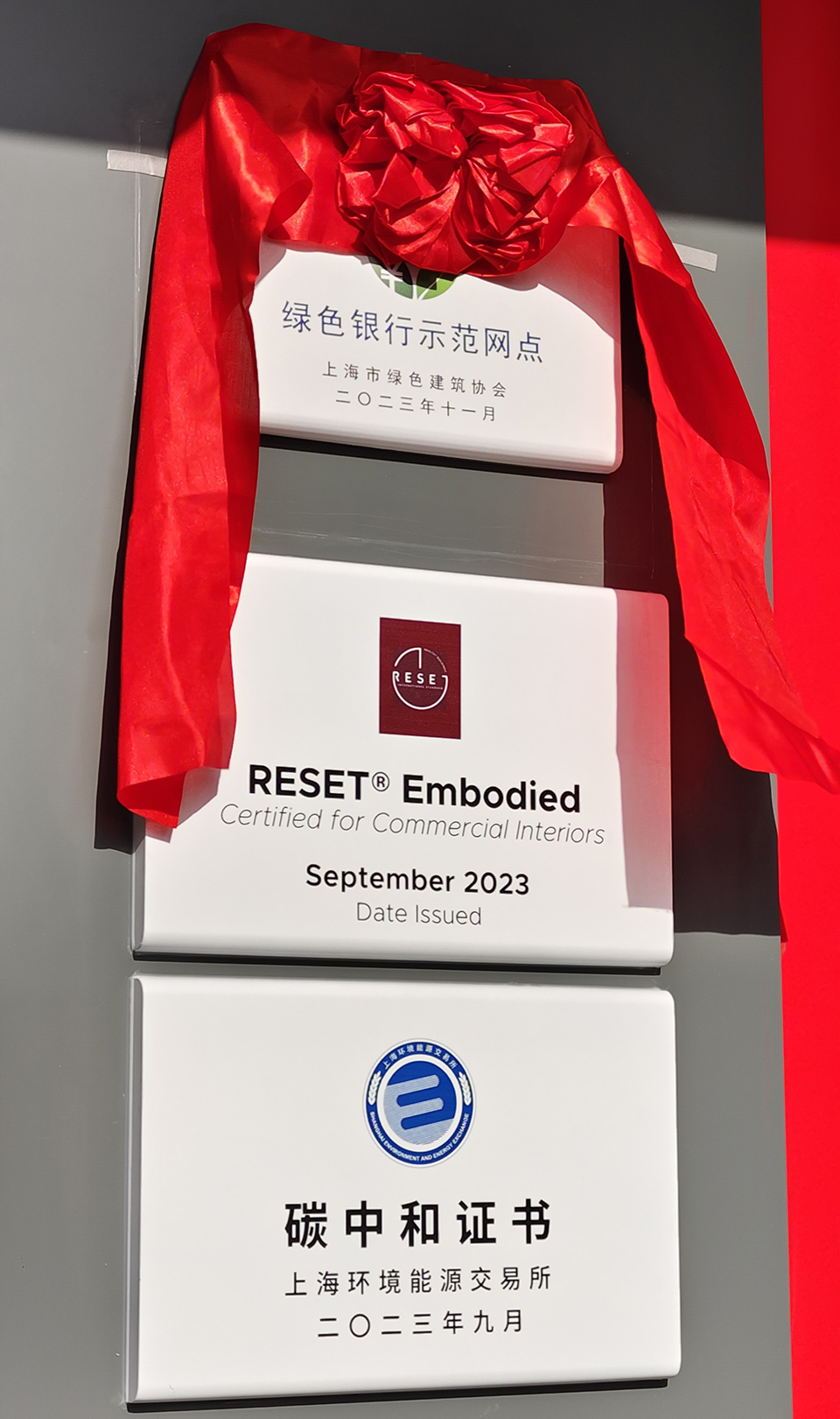On November 2023, the Industrial and Commercial Bank of China (ICBC) unveiled its newly renovated branch on Shanghai Wusong Road, becoming the first bank branch to achieve RESET Embodied certification.
Since 2021, ICBC has been exploring carbon initiatives and integrating the concept of sustainable development into its business practices. When an opportunity presented itself in the form of a renovation of one of their bank branches, ICBC seized it.

Image Above: The Grand Opening Ceremony
Total embodied carbon emissions: 87.3 TCO₂e
100% of embodied carbon emissions from construction offset via China Certification Emission Reduction (CCER) credits
84.4% of the interior can be recycled via correct recycling methods
97.4% of the material ingredients are known and free of harmful red-listed chemicals, which is: 14.3x better than the industry baseline
The RESET Embodied Standard consists of 3 parts: embodied carbon, embodied circularity, and embodied health. For embodied carbon, a project is required to collect material carbon and quantity data for Phases A1-A5 in a project’s life cycle assessment to be able to calculate the project’s RESET Embodied Carbon score. For embodied circularity, recyclability data for the source of life and the end of life of the product and materials are required. And for embodied health, chemical data for each material is required.
For ICBC, the journey began with the quantity survey of materials along with research to acquire data for embodied carbon, circularity, and health. With quantity information on hand, the project team found the highest-impact materials based on how much of it was used and focused their time on finding better alternative materials with lower carbon, better circularity, and better health performance.

Image Above: ICBC Shanghai Wusong Rd Branch Interiors
A1-A3 Product
Walls and partitions made up 40% of the materials used, the largest proportion in the project
prefabrication and dry construction for the walls and partitions significantly reduced the A1-A3 embodied carbon emissions for materials
A4 Transportation
50% of the materials have detailed transportation tracking, providing precise distance data and offering a reliable basis for A4 embodied carbon calculation.
sourced materials from local manufacturers To reduce carbon emissions during the material transportation process
A5 Construction
real-time energy monitoring meters were installed to monitor the power consumption during construction, which is more accurate than the typical method that consists of estimation.
Choosing prefabricated walls and partitions that use a modular design with easy break down makes them easily recycled and potentially reusable
A large percentage of the materials by quantity and weight have zero organics in them
i.e. for walls and flooring, these materials include gypsum boards, steel brackets, brick, cement, and stone.

Image Above: Certificates Achieved by iCBC Shanghai Wusong Rd Branch
Once construction was completed, the final project results were calculated and audited using the RESET Embodied Standard.
With the RESET Embodied certification and verified data in hand, ICBC purchased CCER (Certified Emission Reduction) offsets equivalent to the embodied carbon of the materials and construction of the ICBC Shanghai Wusong Road Branch renovation to achieve embodied carbon neutral status.

Image Above: Certification Boards Achieved by iCBC Shanghai Wusong Rd Branch
RESET celebrates ICBC for becoming the first bank branch to be RESET Embodied Certified and congratulates the Wusong bank branch for achieving embodied carbon neutral!
Project Name: ICBC Wusong Rd Bank Branch
Location: Shanghai
Space Type: Office
Total Gross Floor Area: 417 m²
Typology: Commercial Interiors
Stage: In-Use
Certification: RESET Embodied Certified
Project Team Lead: Benjamin Li
Project Team Company: Tian Hua
RESET Auditor: Lingling Zhou
RESET® is a data standard, accompanied by a set of assessment tools, created and managed by GIGA, to develop actionable, long-term strategies towards health and sustainability for the built environment. RESET focuses on creating a quantitative structure around embodied and operating data to generate opportunities for improvement and optimizations by combining the development of databases, continuous monitoring, and cloud software to increase the visibility of health and sustainability reporting and analytics in the built environment.
For more information about RESET, please visit: https://www.reset.build/.